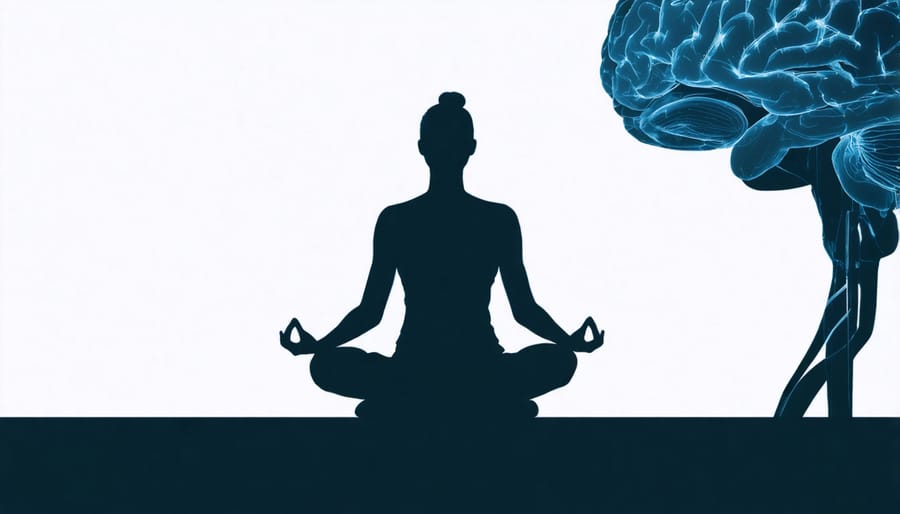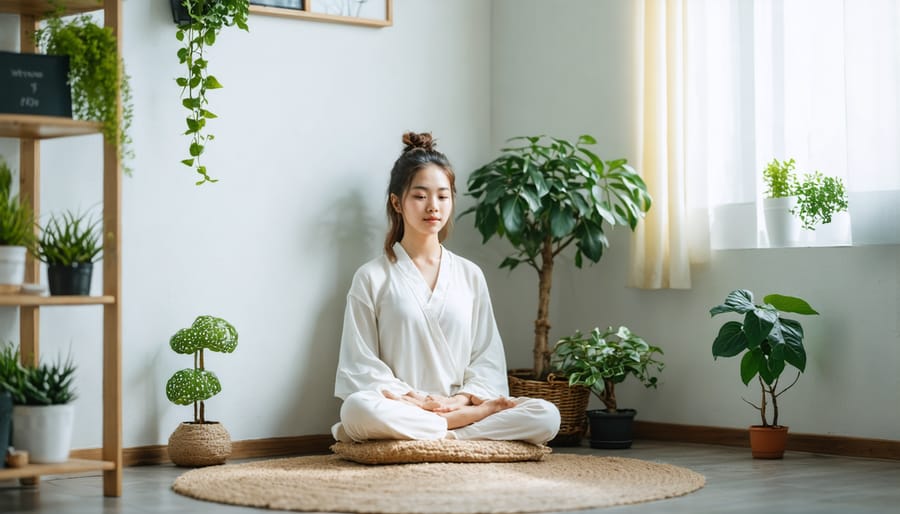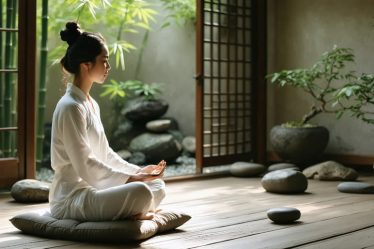
In a world that never stops spinning, your wellness journey begins with a single conscious breath. Meditation isn’t just another item on your to-do list—it’s the pause button your mind and body have been craving. From reducing stress and anxiety to enhancing focus and emotional balance, this ancient practice has evolved into a modern necessity for maintaining mental clarity and inner peace.
Whether you’re a busy professional squeezing in five minutes between meetings or a wellness enthusiast ready to deepen your practice, meditation offers a personalized path to better living. Recent studies show that just 10 minutes of daily meditation can significantly reduce cortisol levels and improve overall well-being. The beauty of this practice lies in its accessibility—no special equipment or expensive memberships required, just your commitment to showing up for yourself.
As someone who discovered meditation during my own burnout recovery, I can attest to its transformative power. Together, we’ll explore practical ways to incorporate mindfulness into your daily routine, creating a sustainable practice that fits your unique lifestyle.
Why Your Wellness Journey Needs Meditation
The Mind-Body Connection
Have you ever noticed how a moment of calm can ease both a racing mind and tense shoulders? That’s the mind-body connection in action, and meditation is one of the most powerful ways to tap into this remarkable relationship. When we meditate, we’re not just quieting our thoughts – we’re actually triggering a cascade of positive changes throughout our entire body.
I learned this firsthand during a particularly stressful period at work. Starting a simple 10-minute meditation practice not only helped manage my anxiety but also relieved my chronic tension headaches. Science backs this up: regular meditation has been shown to lower blood pressure, improve sleep quality, and boost immune function.
Think of meditation as a reset button for both your mind and body. As you focus on your breath, your heart rate naturally slows, stress hormones decrease, and inflammation levels drop. Even better, these benefits don’t disappear when you open your eyes – they build up over time, creating lasting positive changes in both your mental and physical well-being.

Stress Relief That Actually Works
When it comes to managing life’s daily pressures, research consistently shows that meditation delivers real stress reduction benefits. Studies from leading institutions like Harvard Medical School have found that regular meditation practice can lower cortisol levels – our body’s primary stress hormone – by up to 20%. What I love most about meditation is how quickly you can feel its effects; even a 5-minute session can create noticeable calm.
Brain scans of long-term meditators show increased activity in areas associated with emotional regulation and decreased activity in the amygdala, our brain’s stress center. But you don’t need years of practice to see results. Many of my readers report feeling more centered and less reactive after just two weeks of consistent meditation.
The beauty of meditation lies in its accessibility – you can practice anywhere, anytime, and it’s completely free. Start with just three minutes daily, and you’ll be amazed at how quickly your stress response begins to shift.
Creating Your 5-Minute Meditation Sanctuary
The Perfect Spot (Even in a Tiny Apartment)
Living in a cozy apartment doesn’t mean you can’t create your perfect meditation sanctuary. I discovered this firsthand when I transformed a tiny corner of my studio into a peaceful retreat. The key is to think creatively and work with what you have.
Start by identifying a quiet spot that feels naturally calming – maybe it’s by a window or in a less-trafficked area of your home. Even a corner of your bedroom can become a dedicated meditation space. Add a small cushion or folded blanket, and you’re halfway there.
Make it special with minimal decorative touches: a small plant, a meaningful photo, or a battery-operated flameless candle. The goal isn’t to crowd the space but to create a visual anchor that signals “this is where I meditate.”
For ultra-tight spaces, consider portable meditation setups. Store your cushion and any accessories in a decorative basket that can be tucked away when not in use. Some of my readers even created meditation spaces in walk-in closets or by their bedside tables – proving that with a bit of imagination, any space can become your sanctuary.
Remember, the most important aspect isn’t the size of your meditation space, but the intention you bring to it.

Essential Elements for Comfort
Creating a comfortable meditation space doesn’t require a complete home renovation or expensive equipment. I’ve learned through my own practice that a few key elements can make all the difference. Start with a supportive cushion or meditation pillow – trust me, your back will thank you! I spent months trying to meditate on my couch before discovering how much better it felt with proper support.
A soft blanket is essential, as your body temperature can drop during longer sessions. I keep a cozy throw nearby, especially during morning meditations. Good lighting matters too – natural light is ideal, but a soft lamp works perfectly for evening practice. Consider adding a small diffuser with calming essential oils like lavender or frankincense to create a sensory experience that signals “meditation time” to your mind.
For those who prefer guidance, having a meditation app ready on your phone or tablet can be helpful. Finally, don’t forget a timer – it helps you stay focused on your practice instead of wondering about the time. Remember, these items are suggestions – your comfort essentials might look different, and that’s perfectly okay!
Beginner-Friendly Meditation Techniques
Breath-Based Meditation
Let’s start with one of the most accessible breathing techniques for meditation: the simple breath awareness practice. I remember when I first started meditating, just focusing on my breath felt like such a foreign concept, but it quickly became my daily anchor for peace.
Find a comfortable seated position, whether that’s cross-legged on a cushion or in your favorite chair. Close your eyes gently and take a moment to settle in. Begin by noticing your natural breath – no need to change anything just yet. Simply observe how the air flows in through your nose, fills your lungs, and exits again.
As thoughts pop up (and trust me, they will!), acknowledge them like passing clouds and return your focus to your breath. Try counting your breaths from one to ten, then start over. This simple technique helps train your mind to stay present.
For beginners, I recommend starting with just 5 minutes. You might be surprised how challenging yet rewarding this can be! As you become more comfortable, gradually increase your practice time. Remember, there’s no “perfect” way to meditate – your experience is uniquely yours.
A helpful tip I’ve learned along the way: if you’re feeling particularly scattered, try placing one hand on your belly to feel the gentle rise and fall of your breath. This physical connection can help anchor your attention and make the practice more tangible.

Mindful Movement for Busy Days
As a busy mom juggling work and family, I discovered that meditation doesn’t always mean sitting cross-legged in silence for an hour. The secret lies in transforming everyday moments into mindful experiences. Think of your morning coffee ritual – instead of scrolling through your phone, take those few minutes to focus on the warmth of the cup, the aroma, and your breath.
Walking meditation is another game-changer for hectic days. Whether you’re heading to a meeting or picking up groceries, pay attention to each step, the rhythm of your movement, and the sensation of your feet touching the ground. This simple practice can turn a mundane walk into a refreshing mental reset.
Even household chores can become meditation in motion. While washing dishes, notice the temperature of the water, the sound of plates clinking, and the circular motions of your hands. It’s about being present in whatever you’re doing, rather than rushing through to the next task.
My personal favorite is the “red light meditation” – using traffic stops as mini-meditation moments. Instead of feeling frustrated, use these pauses to check in with yourself, take deep breaths, and release tension in your shoulders.
Remember, mindful movement isn’t about perfection; it’s about finding pockets of peace within your existing routine. Start with just one activity today and notice how different it feels when you bring your full attention to it.
Making It Stick: Your Personal Meditation Schedule
Morning vs. Evening Practice
Finding your ideal meditation time is like discovering your perfect morning coffee ritual – it’s deeply personal and should align with your natural rhythms. While some swear by dawn meditation to set a positive tone for the day, others find their zen through an evening meditation practice that helps them unwind.
Morning practice often feels magical – the world is quiet, your mind is fresh, and you’re starting with a clean slate. It’s like having a secret superpower that helps you navigate daily challenges with grace. Plus, morning meditation can prevent that familiar feeling of “I’ll do it later” turning into “maybe tomorrow.”
However, if you’re not naturally a morning person (and hey, that’s totally okay!), evening meditation might be your sweet spot. It’s a beautiful way to process the day’s events, release tension, and prepare for restful sleep. I personally switched from morning to evening sessions when I became a mom, and it transformed my relationship with meditation.
The key isn’t the time – it’s consistency. Choose a time that feels natural and sustainable for your lifestyle, and don’t be afraid to adjust as your life evolves.
Building Your Meditation Habit
Building a meditation habit doesn’t have to feel overwhelming. Just like I learned when starting my own practice, the key is to start small and be consistent. Choose a specific time of day – many find success with early mornings before the day gets busy, or evenings as a way to decompress. Start with just 5 minutes and gradually increase as you feel comfortable.
Set yourself up for success by creating a dedicated space, even if it’s just a corner of your bedroom with a comfortable cushion. I keep a cozy blanket and my favorite scented candle nearby to make the experience more inviting. Use habit stacking by connecting meditation to something you already do daily, like having your morning coffee or getting ready for bed.
Remember, missing a day doesn’t mean starting over. Treat your practice with gentle consistency rather than rigid perfection. Try using a meditation app to track your progress, or join a local meditation group for accountability. The goal isn’t to meditate perfectly but to show up for yourself consistently, even if it’s just for a few mindful breaths each day.
As we’ve explored throughout this article, meditation isn’t just a trendy wellness practice – it’s a transformative tool that can enhance every aspect of your life. From reducing stress and anxiety to improving focus and emotional balance, the benefits of a regular meditation practice are both immediate and long-lasting. Remember, there’s no “perfect” way to meditate; your journey is uniquely yours. Whether you start with just two minutes of mindful breathing each morning or dive into longer guided sessions, the key is to begin somewhere and remain consistent. I encourage you to take that first step today. Start small, be patient with yourself, and watch as the simple act of showing up for your practice creates ripples of positive change throughout your life. Your future self will thank you for beginning this beautiful journey of self-discovery and inner peace.



